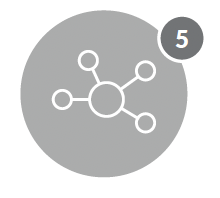Climate Smart Restoration
Contact usCLIMATE-INFORMED ECOSYSTEM RESTORATION IN MARINE PROTECTED AREAS
10 Challenges and Opportunities for Climate-Smart Restoration in Marine Protected Areas
The marine environment is increasingly facing pressures from human activities, and as a result marine protected areas (MPAs) have been established globally to manage human activities in order to maintain ecological integrity, ecosystem services, and more in valued ocean places. One such example is the National Marine Sanctuary System, a network of 16 underwater parks that encompasses more than 620,000 square miles of marine and Great Lakes waters.
Although MPAs have some success in managing local human activities, climate change has emerged as a dominant, global-scale threat to marine ecosystems. Corals and kelps, foundational habitat-forming species groups found in the majority of national marine sanctuaries and other MPAs worldwide, have been particularly impacted by climate change and are experiencing unprecedented declines. Coral and kelp losses have been particularly profound in some national marine sanctuaries.
In recent decades, restoration has emerged as a key tool for MPAs to complement management of human activities and aid in the recovery of degraded ecosystems. However, climate change has increasingly challenged the success of traditional restoration activities that seek to return an ecosystem to a prior state. It is imperative that the planning and implementation of restoration strategies for both coral reefs and kelp forests consider ongoing climate change and future climate scenarios, including the need for rapid response when acute climate pressures, such as coral bleaching events, occur.
Photo: NOAA/NMFS/PIFSC/CRED, Oceanography Team
To understand how to best move marine ecosystem restoration forward in light of climate change, particularly for the increasingly threatened coral reef and kelp forest ecosystems in MPAs, the Climate-Informed Ecosystem Restoration in MPAs Symposium was convened in March 2024. This symposium brought together 60 coral reef and kelp forest experts, including MPA managers, representatives from Indigenous governments and organizations, academic scientists, restoration practitioners, and other community members to discuss synergies between coral reef and kelp forest climate threats, and to generate actionable recommendations for advancing climate-informed restoration practices for these critical habitats. The objectives of the symposium were to:
- Identify research needs and effective strategies for climate-informed restoration in kelp forest and coral reef ecosystems in national marine sanctuaries and other MPAs;
- Evaluate decision-making frameworks and best practices for addressing governance, equity, and social considerations in climate-informed restoration efforts;
- Share experiences in restoration planning, permitting, funding, community engagement, and communications; and,
- Generate actionable recommendations for advancing climate-informed restoration practices.
The event resulted in the identification of 10 challenges and opportunities for climate-smart restoration in MPAs, as featured in the below infographic and in this report.
Photo: Matt McIntosh/NOAA
10 CHALLENGES AND OPPORTUNITIES FOR RESTORATION IN MPAS
 MEANINGFUL AND EQUITABLE ENGAGEMENT OF INDIGENOUS PEOPLES
MEANINGFUL AND EQUITABLE ENGAGEMENT OF INDIGENOUS PEOPLES
Involving Indigenous governments, peoples, and communities from the beginning will lead to more successful restoration efforts. As rightsholders with long-standing relationships with marine ecosystems, meaningful and equitable partnerships with Indigenous Peoples, including through co-management and co-stewardship, are essential to sustainable and successful restoration.
 EQUITABLE INCLUSION OF INDIGENOUS KNOWLEDGE
EQUITABLE INCLUSION OF INDIGENOUS KNOWLEDGE
Multiple-knowledge-based approaches that include Indigenous Knowledge will lead to more effective solutions for the restoration of degraded ecosystems. Co-production of knowledge approaches to bring together Indigenous Knowledge and Western science have been highlighted as necessary to achieve shared conservation and restoration goals.
 MORE INCLUSIVE RESTORATION CONVERSATIONS
MORE INCLUSIVE RESTORATION CONVERSATIONS
Involving diverse disciplines, such as economics, social science, and education, in restoration activities from the start, along with early partnership with local communities and inclusion of local knowledge, can make restoration activities more successful and enduring. Additionally, despite regional distinctions (e.g., levels of recruitment, oceanographic variation), inclusion of diverse regional perspectives in restoration planning can leverage experience within and across regions for better outcomes.
 REDUCTION OF NON-CLIMATE STRESSORS
REDUCTION OF NON-CLIMATE STRESSORS
Reducing non-climate stressors to systems (e.g., overfishing, destructive fishing methods) through a holistic restoration plan that includes upstream sources and potential point source pollution can set climate-informed restoration up for success.
 ADAPTIVE GOAL-SETTING
ADAPTIVE GOAL-SETTING
Adaptive goal-setting is necessary to ensure flexibility in restoration strategies as environmental conditions change. This approach supports restoration that focuses on priority outcomes, identified in partnership with rightsholders and stakeholders, even when dealing with irreversible change.
 STREAMLINED AND FLEXIBLE PERMITTING
STREAMLINED AND FLEXIBLE PERMITTING
Streamlining the process of permitting restoration activities by increasing collaboration among permitting authorities and building flexibility into permitting processes to be responsive to climate-driven changes are critical for implementing climate-smart restoration.
 POLICY AND LEGISLATIVE TOOLS FOR EMERGENCY RESPONSE
POLICY AND LEGISLATIVE TOOLS FOR EMERGENCY RESPONSE
Policy and legislative tools for responding to disasters could be better designed to support climate-informed restoration. For example, the ability to declare emergencies across multiple levels of government for bleaching events and kelp loss may streamline processes, increase access to funding, and facilitate spending to enable restoration in at-risk ecosystems.
 MONITORING AND TECHNOLOGY
MONITORING AND TECHNOLOGY
Developing and monitoring more robust restoration indicators, including bio-cultural, socioeconomic, and ecological indicators, can facilitate more climate-responsive restoration. Investing in new monitoring methods and technologies for remote sensing, automation, and artificial intelligence, as well as significantly scaling up operations, is critical for the marine restoration field to work in a changing ocean.
 SCALING UP AND SECURING LONG-TERM FUNDING
SCALING UP AND SECURING LONG-TERM FUNDING
The scale of the climate crisis requires significant increases in restoration funding (and an associated shift in strategy for and mindset toward securing such funding), exploring new funding sources, and building knowledge among funding partners on the need for flexible and long-term funding that promotes learning from both successes and failures.
 CAPACITY BUILDING AND TRAINING THE NEXT GENERATION
CAPACITY BUILDING AND TRAINING THE NEXT GENERATION
Restoration success requires capacity building among MPA staff and their partners, through action planning, training, citizen engagement, and resource sharing. It also requires the involvement of the next generation in restoration efforts through education and training, and assuring that historical perspectives of experienced practitioners and scientists are appropriately incorporated in restoration decisions.
Contact for More Information
Jillian Neuberger at jneuberger@marinesanctuary.org

Photo: Christina Funck
